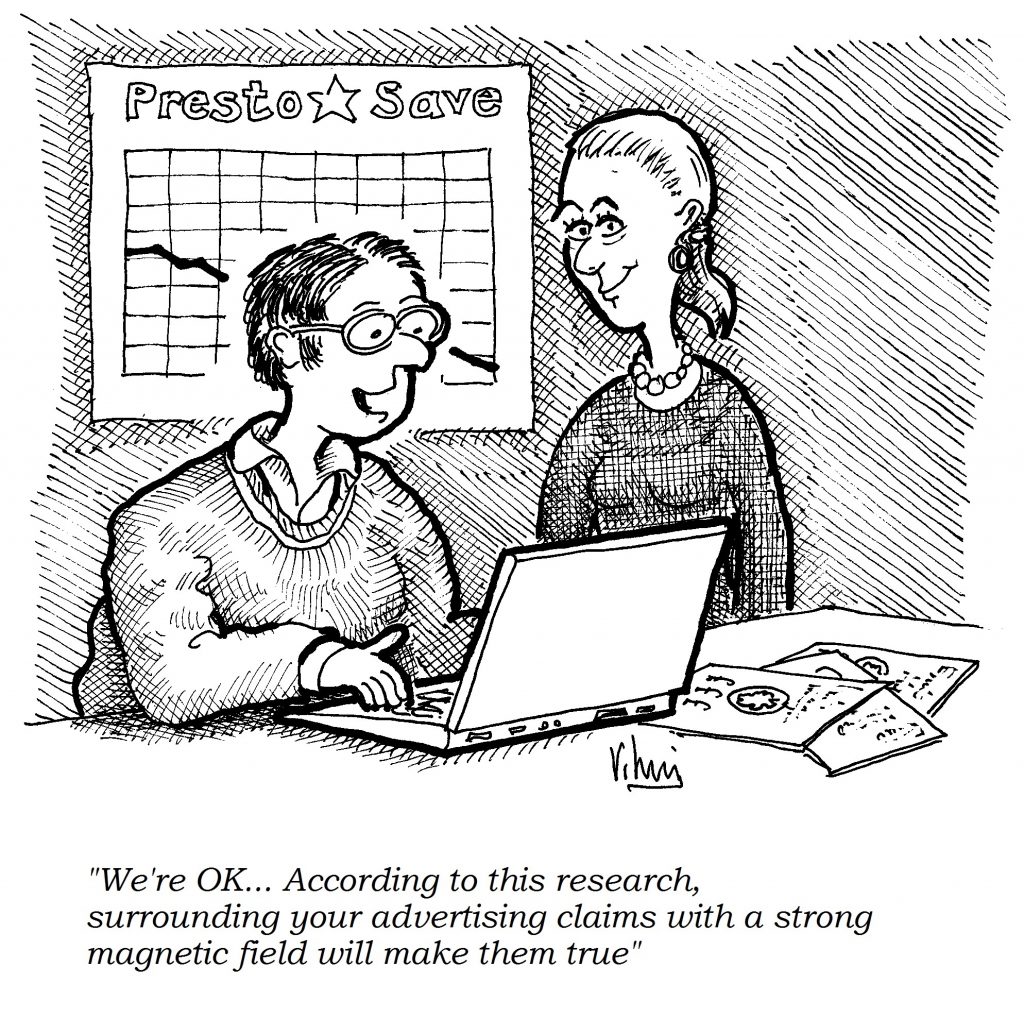One ironic and highly satisfying way to debunk the claims for magnetic fuel conditioning is to pitch one supplier against another. I have been digging in the archive for claims made by different suppliers, and with assistance from eagle-eyed newsletter reader Mark J., have compiled the following account. Let’s start with Magnatech. Their web site makes a bald assertion that passing fuel through a magnet’s negative and positive (sic) fields makes it easier for the fuel to bond with oxygen and burn. They offer no explanation of how this works but say it creates a rise in flame temperature of “an extra 120°C or more”. However, their competitor Maximus Green says that the flame temperature only rises by 20°C, but they gamely have a crack at explaining how: they claim that hydrocarbon fuel molecules clump together in large “associations” because they are randomly charged positive and negative (although even if that were true, wouldn’t they just pair up?). Passing through a magnetic field, they say, gives all the molecules a positive charge, breaking up these supposed big clusters of fuel molecules. They don’t say where all the resulting spare electrons go.
Or at least that’s what Maximus Green used to say. In a recent (unsuccessful) submission to the Advertising Standards Authority they offered a completely different story. Quoted in the ASA ruling they said that “the hydrogen and carbon compound of gas and oil had two distinct isometric (sic) forms – ‘Ortho-state’ and ‘Para-state’ – which were characterised by different, opposite nucleus spins. The Ortho-state was more unstable and reactive in comparison to the Para-state, and therefore that state was desired because it resulted in a higher rate of combustion. They said that when fuel passed through the magnetic field the hydrocarbon molecule changed from the para-hydrogen state to the ortho-hydrogen state, and that the higher energised spin state of the ortho-hydrogen molecules produced high electrical potential (reactivity), which attracted additional oxygen and therefore increased combustion efficiency”.
Another player, Maxsys, meanwhile, are having none of this ionised oil, lumpy gas or nuclear spin stuff. Their 2014 brochure lays the blame on very fine dust in the fuel. By applying a magnetic field, they say “nanoparticles that would normally pass through the combustion or reduce heat transfer efficiency, by clinging to and fouling surfaces, begin to cluster together”, an effect which forms “larger colloids, less likely to create a film deposit and compromise a plant’s performance”. Now pardon my scientific knowledge, but a “colloid” is a stable suspension of very fine particles in a liquid. Milk is a good example. Be that as it may, Maxsys are saying that magnetic fields cause things to clump together, in direct contradiction to what we heard earlier from Maximus Green in one of their versions of how magnetism supposedly works.
Someone is telling porkies and I will leave it to you, dear reader, to work out who.

Footnote: an independent test of the efficacy of magnets on fuel lines was carried out by Exeter University in 1997. Their report, which strangely is never quoted by vendors, can be downloaded here.